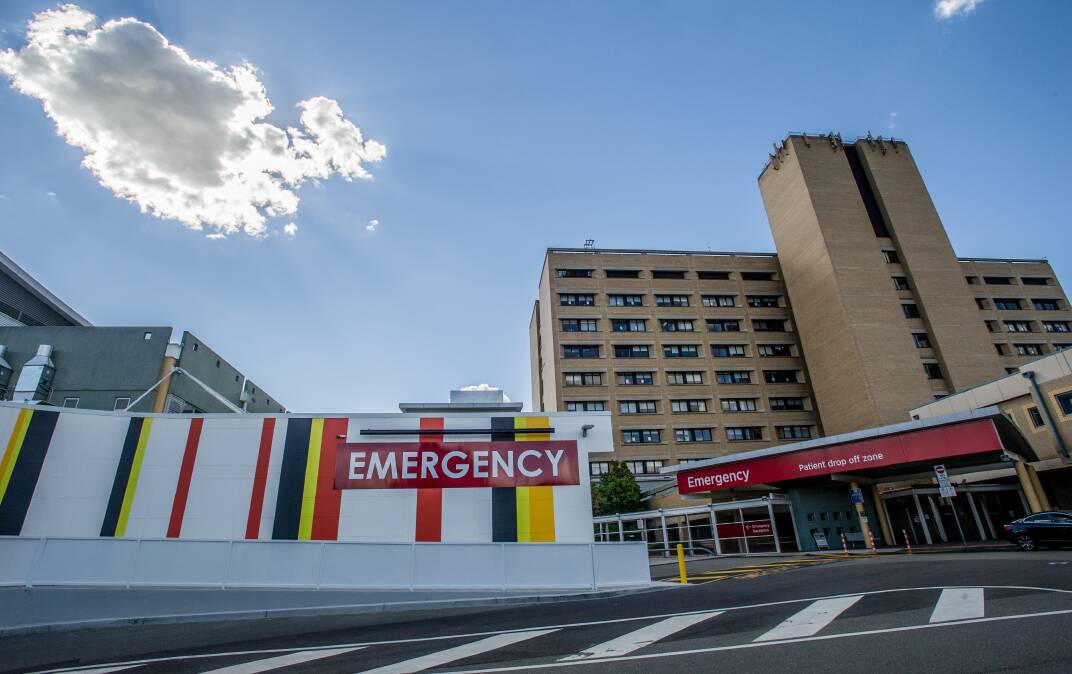Almost one in five nurses and midwives left Canberra's public health system in the last financial year.
There were 700 nursing and midwifery staff who left Canberra Health Services between July 7, 2021 to June 22, 2022.
The health service was able to replace those nurses and there was an overall increase in the number of nurses and midwives with an additional 226 working in the system.
There were 3842 nursing staff working at Canberra Health Services at the end of the year, the annual report for 2021-22 shows.
The figures were revealed in questions on notice from recent annual report hearings.
The number of nurses who left is higher than what was indicated in a workplace survey taken last November. Those results showed that one in eight staff in Canberra's health system had indicated an intention to leave in the next two years.
There have been concerns raised over the past year about senior nurses leaving the territory's health system.
New figures show nearly 15 per cent of nursing and midwifery staff who had been at Canberra Health Services for more than 20 years had left the system in 2021-22.
Of staff who had been there for 10 to 20 years, 9.5 per cent had left, which was up from 3.9 per cent in the year before. Nearly 9 per cent of staff who had been there for five to 10 years left in 2021-22.
A workforce plan for nursing and midwifery at Canberra Health Service identified issues with a skills mix, saying it had struggled to attract an appropriate skill mix in areas of need.
The ACT government committed to nurse-to-patient ratios at the 2020 election and promised to hire at least 400 extra healthcare workers to achieve this.
A nurse-to-patient ratio of one-to-four started to be implemented earlier this year and there were 90 extra staff hired to meet this ratio.
It is part of a four-year program with the first lot of ratios to be implemented in the general medical, general surgical, acute aged care and the adult mental health units.
The next stage of ratios will include midwives but all details will be covered in the next nursing and midwifery enterprise agreement, for which negotiations are currently underway.
Figures provided by Canberra Health Services show in the past three months wards with nurse-to-patient ratios were compliant with the ratio in more than 80 per cent of shifts.
It showed between August 29 to September 25 there was 85 per cent compliance, between September 26 to October 23 there was 81 per cent compliance and between October 24 to November 20 there was 82 per cent compliance.
"Work is ongoing to meet full compliance with the ratios in the context of an international nursing shortage, continued response to the COVID-19 pandemic and supporting staff to access leave over this time," an ACT government spokesman said.
Australian Nursing and Midwifery Federation ACT branch secretary Matthew Daniel said these figures were not an accurate representation of the entire shift.
Canberra Health Services measures compliance by extracting data about shifts at set times during the day but this doesn't necessarily reflect circumstances throughout the entire shift, for example where a nurse is required to shift wards.
Calvary Public Hospital measures shifts as a "point in time" which only reflects what the ratio is at the start of a shift.
Mr Daniel raised concerns about the implementation of ratios in an interview when it was revealed the union had left the government's oversight group into cultural reform.
"There is still a lot of discontent around the staffing levels and the impact of social levels on the psychosocial wellbeing of our members still remains the key focus for us that our members are suffering," he said.
"What we need the government to do is meet ratios and that will go a long way to addressing the impact on the wellbeing of our members."
The government spokesman said work was ongoing to change this reporting and in the new year there would be public reporting of ratios.
"With the purchase of additional software in June 2022, CHS is working towards reporting data that represents what happens over an entire shift," the spokesman said.
"This reporting development is in the final stages of testing and validation to ensure accuracy in reporting."








